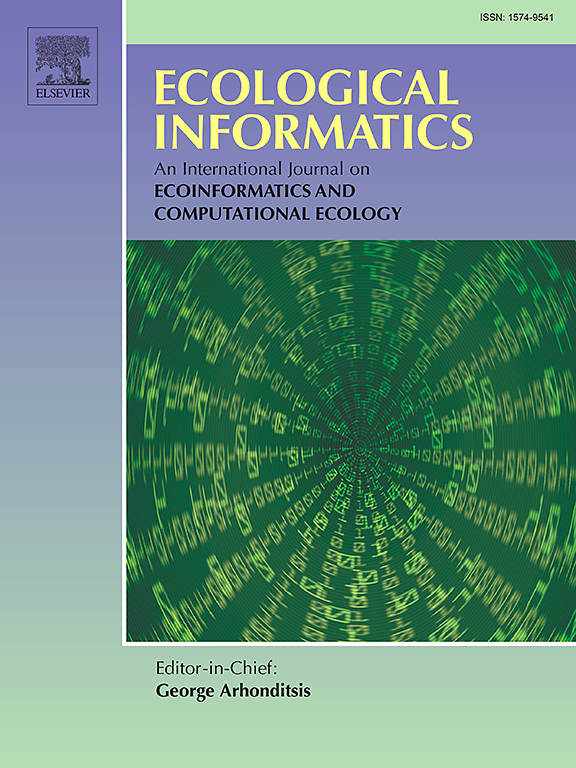Clean fishing: Construction of prediction model for high-catch Antarctic krill (Euphausia superba) fishing grounds based on deep learning and dynamic sliding window methods
IF 5.8
2区 环境科学与生态学
Q1 ECOLOGY
引用次数: 0
Abstract
Achieving energy-efficient, precise, and overall efficient production of Antarctic krill (Euphausia superba) is critical for realizing sustainable and ecological fisheries in the context of ongoing natural and anthropogenic climate change. In this study, we comprehensively analyzed commercial E. superba statistics and multivariate marine environmental data from 2010 to 2022 using the gravity center of the fishing ground method, dynamic sliding window, 3DCNN, and 3DCNN-ConvLSTM models. Results: 1) Inter-annual and inter-weekly catch varied significantly, with the total weekly catch evenly distributed between 0 and 2600 tons. The annual gravity center of the fishing grounds varied considerably between years and was mainly concentrated around the islands and in the strait. 2) Neither long- nor short-time-series historical data led to the best prediction. The optimal sliding window size for the 3DCNN was 4, whereas it was 11 for the 3DCNN-ConvLSTM model. 3) Climate change must be considered when selecting data, and the addition of biased data may negatively affect the model's predictive performance. 4) When using an optimal sliding window, the 3DCNN model outperformed the 3DCNN-ConvLSTM model. 5) The 3DCNN model tends to learn information about the environmental variables with the most significant differences in different categories of fishing grounds. This study aids in efficient selection of the most relevant historical data and an optimal model for developing a prediction model for high-catch fishing grounds, thereby providing a scientific foundation for clean production, sustainable development, and effective management of the E. superba fishery.

求助全文
约1分钟内获得全文
求助全文
来源期刊

Ecological Informatics
环境科学-生态学
CiteScore
8.30
自引率
11.80%
发文量
346
审稿时长
46 days
期刊介绍:
The journal Ecological Informatics is devoted to the publication of high quality, peer-reviewed articles on all aspects of computational ecology, data science and biogeography. The scope of the journal takes into account the data-intensive nature of ecology, the growing capacity of information technology to access, harness and leverage complex data as well as the critical need for informing sustainable management in view of global environmental and climate change.
The nature of the journal is interdisciplinary at the crossover between ecology and informatics. It focuses on novel concepts and techniques for image- and genome-based monitoring and interpretation, sensor- and multimedia-based data acquisition, internet-based data archiving and sharing, data assimilation, modelling and prediction of ecological data.
 求助内容:
求助内容: 应助结果提醒方式:
应助结果提醒方式:


